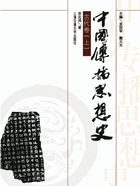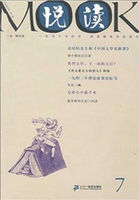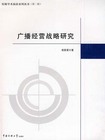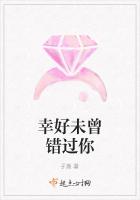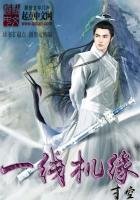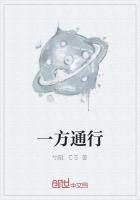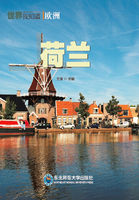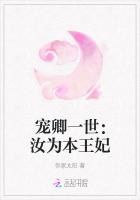These representations of Christ are also noteworthy in their similarity.Because many are taken from historic works of art,Christ's features are similarly depicted(long hair,beard,white skin)in a manner that is,for lack of a better term,predominantly renaissance Catholic.Furthermore,Christ is not represented in any modern context of masculinity,instead being offered as the effeminate Jesus that has been criticized in some religious circles in the past few decades.
This construct of the femininity of Christ raises another issue in the use of symbols as referents of religiosity.The effeminate Christ is both a signifier of the historical Jesus,or perhaps more importantly,as a referent of faith(“Jesus Online”).This construct of personal religiosity or belief systems as perhaps effeminate is further demonstrated by the absence of women as representatives of religious institutions(i.e.,male-centric organizations)versus the use of women as signifiers of“spirituality”on the only two covers featuring them.On one of these,a woman,naked but for thin bandages draped over her hips,holds in her prayerfully clasped hands a pair of white-feathered(and glowing)wings over her breasts.The wings seem to engulf her in light and are intended to signify the healing power of faith.In this instance,the woman,light,and angelic wings are brought together as nurturing symbols.The text solidifies this interpretation by noting the relationship between personal spirituality and health.
The other depiction of a woman is a graphic artist's picture of a blue monochromatic(but for her bright red lips)woman who might be of East Indian origin.She is represented in a mode of prayer-her eyes are close,her hands shy of being clasped with her fingertips just touching together beneath her chin.Rather than the traditional Tilaka or Bindiya mark of Hindu belief,this woman's forehead is marked with a DNA double helix strand that spirals upward into hands that open to the heavens.The cover title brings together the notion of religiosity,belief in God,and genetics,asking if“our DNA compel(s)us to seek a higher power,”before offering readers a chance to take a quiz to determine how“spiritual”they are.Again,this construct of spirituality is represented as metaphysical and effeminate,yet within the scope of scientific understanding.
Bridge to Popular Culture
The 32 covers are,at best,quasi-religious in nature.Rather than addressing religion exclusively as a matter of belief or practice,covers also introduce alternative subjects(e.g.,science or politics),or promote a new popular culture event(such as the Internet or a recent Disney film).Furthermore,consistent with economic marketing factors,ten of these covers align the magazine's religious subject matter with religious holidays(Easter in April and Christmas in December).
While there is an opportunity to depict standard religious symbols,and thus encourage discourse about particular denominations or practices,such messages get lost in the promotion of popular media events.For example,one cover carrying the headline“America's Fascination with Buddhism,”does not feature Buddhist or Tantric symbols,but instead a still shot of Brad Pitt from the movie Seven Years in Tibet.The subheadings further eviscerate the religious value of Buddhism,informing the reader not only that there are new movies and books about Buddhism,but also by suggesting that Buddhism is a fad among celebrities.
Similarly,another cover asks,“Who was Moses?”with a woodcut depiction of a bearded Moses holding the Ten Commandments.But rather than focus on the religious understanding of Moses in Judeo-Christian belief systems,the printed text delimits the parameters of the inside story as one offering research that gives“a fresh look at a hero of our time.”This hero is not the“historic”Moses represented by the woodcut,but instead the Moses in Disney's newly released cartoon,The Prince of Egypt.Mel Gibson's The Passion of Christ is similarly promoted on a cover depicting a Renaissance painting of Jesus carrying the cross.While the lead question is certainly one of theology,“Why Did Jesus Have to Die?”the smaller text notes new debates arising as“millions flock to see The Passion”during the Easter holiday.
Furthermore,religious imagery promotes new academic research or coincides with newly published books.Several examples demonstrate this flattening of religious symbols.Abraham gazes heavenward in a painting to introduce consumers to a“new book(that)explores the challenge of turning him into a peacemaker”among Muslims,Christians,and Jews who believe he is the father of their faith.Jesus is depicted in dated paintings on all the covers,suggesting that there is no contemporary construct of this religious figure.Four covers depicting Jesus serve as referents of new books(one novel and three scholarly books)questioning contemporary religious belief systems.
Conclusion
Time covers embrace private religious practice,are skeptical of institutions,lack a common code of symbols,and synthesize religion with art,entertainment and scientific information.These findings suggest that,at least in the past decade,Time has appropriated religious symbols and ideas to advance its position as a secular magazine,despite its special emphasis on Judeo-Christian beliefs during particular religious holidays.While the dominant text celebrates both personal and public religious issues as newsworthy events,this study uncovers a clear demarcation between institutional and private religious practice.Hence,the world of religion portrayed in Time is not one where institutions dominate the news consistently.


